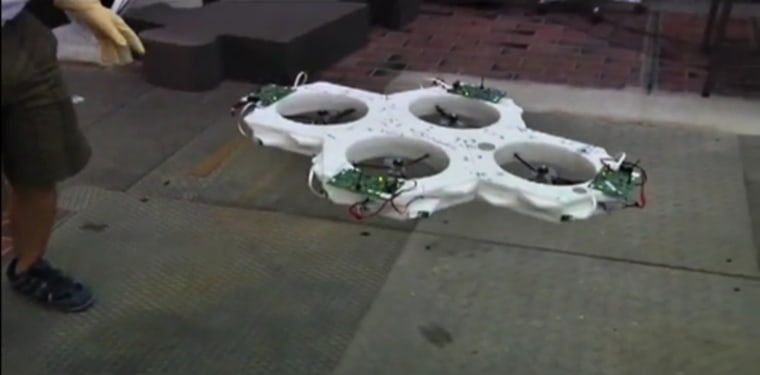Researchers have created robots that seek each other out and then link up, Voltron-style, to form a larger flying machine.
"The Distributed Flight Array provides an excellent platform for exploiting advanced sensor technology ... and investigating techniques in automatic control," said Raymond Oung, one of the lead invstigators on the DFA at the Swiss Federal Institute of Technology in Zurich.
Each of the DFA's six-sided, disk-shaped robots has a propeller in its center that enables it to take off from the ground on its own. But solo flight is wobbly and uncoordinated.
When matched up with three other drones, however, the simple vehicles can achieve relatively stable flight together as a sophisticated, integrated unit.
The trick is that the robots communicate, adjusting their propeller spins in real-time based on their location in the array to keep the whole thing aloft.
When on the ground, the vehicles cruise around on wheels powered by electric motors and find each other with infrared beams and sensors.
The hexagonal robots then link up using magnets that are strong enough to keep the modules connected during flight, but weak enough to break apart when desired.
Sensors onboard each robot measure altitude while a gyroscope serves up orientation data. A basic computer chip processes this information and incorporates infrared signals from the other vehicles so that the array stays level.
Having demonstrated that four modules can work together to achieve flight, the challenge now for Oung and his team is to up the ante. "In the future, we would like to demonstrate flight with multiple modules — more than four — in various configurations," Oung told TechNewsDaily.
The DFA was not constructed with an immediate tech application in mind. But the control strategies being developed across multiple automated agents could be useful down the road "in multi-propeller systems like high altitude wind turbines," Oung suggested, or for robotic transportation systems.
